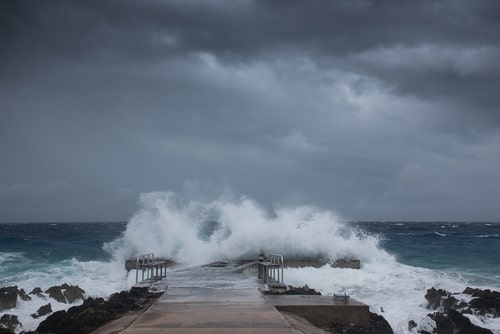
A Guardian newspaper article this week explained that the ability of the global insurance industry to manage society’s risks is being threatened by climate change. More frequent extreme weather events are driving up uninsured losses and making some assets uninsurable.
This analysis, which came from a coalition of the world’s biggest insurers, concluded that the “protection gap” – the difference between the costs of natural disasters and the amount insured – has quadrupled to $100bn (£79bn) a year since the 1980s.
A quote from one of the insurers in the Guardian story stood out for me. John Scott, chief risk officer at the Zurich Insurance Group and chair of ClimateWise’s “Investing for Resilience” programme, said:
“We understand climate change as underwriters, because we are trying to manage the physical consequences of the severe weather we get from climate change, so we can be a really important industry in terms of informing policy makers, either in the public or private sectors, about the pace at which we should make the change from a high-carbon to low-carbon economy.”
What stands out about that quote is that the focus is on managing the “physical” consequences of severe weather – essentially the property risk – and that is quite correct and proper but what about other connected multi-class impacts that arise from these events?
For example, as recently as 2012 saw extreme cold wreak havoc in Eastern Europe, severe drought badly affect harvests in Russia and Eastern Europe, and heatwaves and drought in the USA.
According to a report Extreme Weather: Impact on Tourism and Events this was followed by the devastation of Hurricane Sandy, that caused widespread damage in the U.S., bringing Manhattan to a standstill as the New York Stock Exchange and subway were closed for days and power outages in some areas lasted for weeks. 19,000 flights were cancelled. The total bill for the damage has been estimated at $45 billion.
Tourism is another sector that is vulnerable to a number of risks related to severe weather events. Lower visitor numbers, water stress in times of drought, disruption of road and rail links due to flooding or landslides are major issues.
Then there is interruption of ferry services due to storms or high winds, and disruption of ICT links due to storms or floods: remote areas often depend on a single ICT link. Finally, risk managers fear disruption to the supply chain for the food and drink industry, public health issues, disruption to transport links and increased infrastructure costs (including water supply, energy supply, waste disposal, ICT, supply chain).
Many other sectors are affected by extreme weather events including the health industry, big pharma, retail, mining, sports, construction, energy, marine, and aviation – weather events that impact the environment are extremely connected.
The drivers for these connected risks are political, economic, sociological, technological, legal, and - in the example I have highlighted - environmental in nature and impact the ability of companies to adequately plan.
This connected risk can traverse through and across all industrial sectors through existing and contingent business relationships. Hence networks of companies and their insurers can and will be exposed to the same events, which are increasingly across insurance product classes.

Related Articles
Energy
Energy
Energy